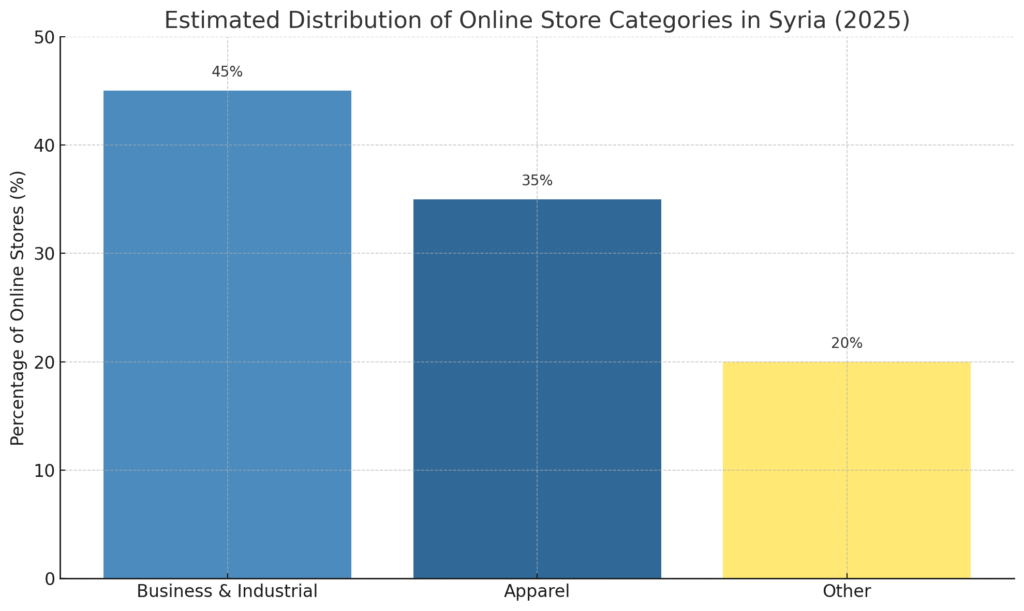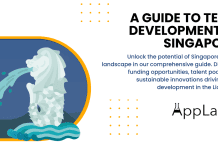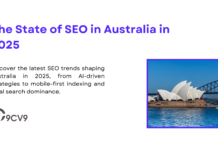Key Takeaways
- SEO in Syria is adapting to global trends like mobile-first indexing and voice search, with businesses optimizing for local and international audiences.
- Despite challenges such as political instability and limited tool access, Syrian companies are increasingly investing in digital marketing and SEO strategies.
- Localized content is becoming crucial for SEO success in Syria, as businesses aim to cater to a growing online population and regional search preferences.
In the rapidly evolving landscape of digital marketing, Search Engine Optimization (SEO) continues to serve as a cornerstone strategy for businesses, organizations, and content creators aiming to establish a strong online presence. As we step into 2025, the global SEO industry is more sophisticated than ever—driven by constant algorithmic updates, user behavior shifts, technological advancements, and region-specific dynamics. While much attention is often given to SEO trends in developed digital economies, a growing number of marketers and entrepreneurs are turning their focus to emerging markets where digital transformation is accelerating. One such market that demands a closer look is Syria.

Syria, a country that has faced significant political and economic challenges over the past decade, is gradually making strides in its digital revival. Despite the difficulties, there has been a notable increase in internet penetration, mobile usage, e-commerce activities, and digital content consumption among its population. This transformation is shaping new opportunities for Syrian businesses and content creators to leverage SEO as a critical tool for reaching both domestic and international audiences.
The Syrian SEO landscape in 2025 is shaped by a unique set of factors—ranging from infrastructural limitations and local search behavior to linguistic nuances and socio-economic conditions. With the increasing adoption of Arabic content online, regional search engines becoming more sophisticated, and a younger, tech-savvy population actively engaging on platforms like YouTube, Facebook, and Instagram, there is a clear shift toward a more digitally enabled society. This shift is being mirrored in how Syrian websites are designed, optimized, and marketed.
However, Syria also faces distinct SEO challenges that are not as prevalent in more developed countries. These include inconsistent access to high-speed internet, limited availability of digital marketing expertise, geopolitical constraints affecting hosting and domain services, and restricted access to some global platforms. As a result, SEO strategies in Syria must be highly localized, adaptive, and resourceful—often requiring a hybrid approach that combines traditional SEO techniques with region-specific tactics.
In this blog post, we delve into the state of SEO in Syria in 2025 with a comprehensive analysis of the current trends, key challenges, and potential opportunities shaping the local digital marketing landscape. From technical SEO and content creation to mobile-first strategies and social media integration, we explore how Syrian businesses are navigating the digital ecosystem and what it takes to succeed in search rankings in this unique market environment.
Whether you’re a local entrepreneur, an international agency looking to enter the Syrian market, or a curious digital strategist eager to understand SEO across different geopolitical contexts, this detailed guide will provide you with valuable insights into how SEO is evolving in Syria in 2025—and why it matters more than ever.
But, before we venture further, we like to share who we are and what we do.
About AppLabx
From developing a solid marketing plan to creating compelling content, optimizing for search engines, leveraging social media, and utilizing paid advertising, AppLabx offers a comprehensive suite of digital marketing services designed to drive growth and profitability for your business.
AppLabx is well known for helping companies and startups use SEO to drive web traffic to their websites and web apps.
At AppLabx, we understand that no two businesses are alike. That’s why we take a personalized approach to every project, working closely with our clients to understand their unique needs and goals, and developing customized strategies to help them achieve success.
If you need a digital consultation, then send in an inquiry here.
The State of SEO in Syria in 2025
- The Digital Landscape of Syria in 2025
- Search Engine Market Dynamics in Syria in 2025
- Online Presence of Businesses and Organizations
- Adoption of SEO Practices in Syria
- Website Traffic and Online Search Behavior
- Challenges and Opportunities for SEO in Syria
- Outlook: SEO in Syria in 2025 – Navigating Between Limitation and Potential
1. The Digital Landscape of Syria in 2025
As of 2025, the digital transformation in Syria is emerging as both a challenge and an opportunity for businesses and digital marketers. Despite years of infrastructural damage, economic constraints, and socio-political hurdles, the country is steadily witnessing growth in internet usage, mobile connectivity, and content consumption. This evolving digital environment is setting the stage for the development of a localized, mobile-first, and adaptive SEO ecosystem that aligns with Syria’s unique market dynamics.
Understanding the state of SEO in Syria requires an in-depth look at the country’s internet landscape, technological limitations, and user behavior. Below is a comprehensive breakdown of the key factors shaping Syria’s digital marketing potential and the role SEO is playing in 2025.
Digital Penetration and Internet Usage Trends in Syria
Internet Adoption Overview
- As of early 2025, Syria recorded approximately 9.01 million internet users, making up 35.8% of the national population.
- This marks a 4.1% year-on-year growth, equating to an increase of 356,000 users between January 2024 and January 2025.
- While the internet penetration rate is still below global and regional averages, this growing user base presents a scalable opportunity for online business development and SEO-driven digital engagement.
Historical Growth Trajectory
- Multiple sources, including the World Bank and MediaLandscapes, have tracked a consistent upward trend in internet access from 31.9% in 2019 to 35.78% in 2020, with fluctuations in reported figures due to varying methodologies.
- This overall growth signifies an expanding digital footprint and an audience increasingly reachable through organic search and digital content strategies.
Urban vs Rural Disparities
- Roughly 58.3% of the Syrian population resides in urban areas, where internet connectivity is more reliable and faster.
- In contrast, 41.7% of the population in rural zones faces limited or inconsistent internet access, which shapes where SEO efforts should be concentrated.
- SEO strategies targeting urban markets such as Damascus, Aleppo, and Latakia are more likely to yield measurable results due to better infrastructure.
Demographic Factors Influencing SEO Strategy
Gender and Age Distribution
- The Syrian population is equally split between males and females, both accounting for 50% of the total.
- Notably, a youth-dominated segment plays a central role in online activity:
- 16.0% of the population is aged between 18–24
- 17.1% falls within the 25–34 age bracket
- These groups are generally more digitally literate, making them prime targets for SEO-optimized content, particularly through mobile platforms and social media integration.
Content Targeting Considerations
- Young Syrian users tend to consume digital content related to:
- Technology
- Education
- Career opportunities
- Lifestyle and entertainment
- SEO campaigns should consider user intent and search behavior reflective of these interests to increase visibility and engagement.
Mobile Dominance and Device Usage Trends
Cellular Mobile Connectivity
- Syria registered 19.5 million active mobile connections in 2025, equivalent to 77.6% of the population.
- With many individuals using multiple SIMs or devices, mobile is the primary channel for digital access.
- 91.7% of these connections are broadband-enabled (3G, 4G, or 5G), enabling high-capacity content delivery.
Speed and Performance Insights
- Mobile internet download speed stood at a median of 12.68 Mbps, marking a 7.3% improvement over the previous year.
- In contrast, fixed-line internet speeds were significantly lower at 3.40 Mbps, and they experienced a 16% decline year-over-year.
- This clear preference for mobile connectivity calls for:
- Mobile-first SEO strategies
- Lightweight web design
- Accelerated Mobile Pages (AMP)
- Compressed image and video formats
Challenges in Internet Infrastructure and Digital Access
Connectivity Gaps and Service Inequality
- Persistent damage to infrastructure, low investment levels, and the aftermath of prolonged conflict have led to:
- One of the lowest mobile broadband penetration rates globally
- Extremely limited internet coverage in rural areas
- Urban centers have better service, but there remains a high variance in digital access across geographic zones.
Censorship and Regulatory Barriers
- Syrian internet users face heavy digital restrictions:
- Government-enforced censorship on social media
- Confiscation of satellite internet devices
- Limited access to global platforms and apps
- These barriers significantly shape how and where SEO strategies are deployed, requiring a local-first approach that aligns with accessible platforms and content regulations.
Economic and Market Constraints
- High costs of internet access relative to income levels pose another challenge:
- Basic mobile contracts with minimal data can consume a large portion of average household income
- This limits the duration and frequency of user engagement online
- SEO efforts should focus on:
- Quick-loading, low-data webpages
- Clear, valuable content above the fold
- Minimizing heavy scripts or auto-play elements
Implications for SEO in Syria in 2025
Strategic Priorities for Digital Marketers
- Focus SEO campaigns on mobile users in urban areas
- Develop Arabic-language content optimized for local dialects and search patterns
- Prioritize on-page technical optimization for speed and usability
- Use geotargeting to deliver location-relevant results
- Optimize for platforms and media types accessible despite censorship (e.g., local news aggregators)
Opportunities for Growth
- Syria’s gradual digital awakening provides a first-mover advantage for businesses and agencies that invest early in:
- Localized keyword research
- Educational and career-related content
- Content marketing strategies tailored to regional interests
- SEO in Syria is not just about visibility; it’s about accessibility, adaptability, and trust-building in a constrained but growing ecosystem.
Conclusion
The state of SEO in Syria in 2025 reflects a dynamic balance between opportunity and limitation. While infrastructural and regulatory barriers remain significant, a growing urbanized, youthful, and mobile-first population is reshaping the potential for organic search and digital marketing success. By adapting SEO strategies to align with Syria’s unique digital ecosystem, marketers can tap into an emerging frontier with long-term potential and relevance.
2. Search Engine Market Dynamics in Syria in 2025
Understanding the state of search engine usage in Syria is critical for any business or digital strategist aiming to succeed in this unique and evolving online environment. As of 2025, the Syrian digital market remains highly centralized around a single platform—Google. The search engine’s virtual monopoly over user queries has had a profound influence on how SEO is approached within the country. To effectively reach audiences in Syria, marketers must align closely with Google’s ecosystem, search algorithms, and best practices.
The following sections provide a comprehensive analysis of the search engine market share in Syria in 2025 and what this means for SEO professionals and businesses aiming to build digital visibility.
Google’s Absolute Dominance in Syria
Market Share and Trends
- In the first quarter of 2025, Google maintained a staggering market share of over 98%, establishing its status as the undisputed leader in search across Syria.
- January 2025: Google held 98.26% of the total search engine market.
- February 2025: The figure increased slightly to 98.30%.
- March 2025: Google’s market share reached 98.87%, reflecting continued trust and reliance on the platform by Syrian users.
- This level of dominance is not just statistically significant—it is strategically defining. Businesses, organizations, and content creators targeting Syrian users cannot afford to ignore the outsized influence of Google in shaping search visibility and online traffic patterns.
Implications for SEO Strategy
- All SEO efforts aimed at the Syrian market must be Google-centric.
- Technical, on-page, and off-page SEO strategies should align with:
- Google’s Search Quality Evaluator Guidelines
- Core Web Vitals and mobile performance standards
- Google’s natural language processing trends (e.g., BERT, MUM algorithms)
- Success in organic search within Syria hinges almost exclusively on Google’s indexing and ranking mechanisms.
Minimal Influence of Alternative Search Engines
Secondary Search Engines and Their Market Share
Although there are multiple search engines available globally, their presence in Syria is extremely limited. Data from Statcounter Global Stats in early 2025 illustrates the marginal role of non-Google platforms:
- Yandex:
- Held a market share between 0.42% and 0.99%
- While relatively more popular in certain regions like Russia or Central Asia, Yandex remains a niche player in Syria
- Microsoft Bing:
- Maintained a stable but negligible share of around 0.61% to 0.66%
- Despite Bing’s integration with Microsoft products, it has not gained traction in the Syrian market
- Yahoo!:
- Recorded usage levels as low as 0.04% to 0.05%
- Yahoo’s search engine is effectively nonexistent in terms of influence among Syrian internet users
- Other Search Engines (DuckDuckGo, Petal Search, etc.):
- Represented a combined market share of less than 0.1%
- Usage is so minimal that they are effectively irrelevant to Syrian SEO efforts
Strategic SEO Recommendations
- Businesses should avoid allocating resources toward optimizing for secondary platforms in Syria.
- SEO investments that focus on non-Google platforms will not yield meaningful returns due to their extremely low adoption.
- Monitoring tools, keyword research, and analytics should be configured with Google’s ecosystem in mind, including tools such as:
- Google Search Console
- Google Analytics 4
- Google Keyword Planner
Why Google Is So Predominant in Syria
Several contextual factors help explain Google’s dominance in the Syrian search market:
- User Familiarity and Trust:
- Google has built decades of brand trust among global internet users, including those in Syria.
- Its consistent availability, intuitive interface, and accurate search results have made it the default search tool for the vast majority of Syrians.
- Device and Browser Integration:
- Google is the default search engine on most Android devices, which dominate mobile usage in Syria.
- Chrome, also owned by Google, is the most widely used browser, further reinforcing search behavior patterns favoring Google.
- Lack of Local Search Engine Development:
- Unlike some other regions that have developed national search engines or alternatives (e.g., China with Baidu, Russia with Yandex), Syria lacks a homegrown or regionally dominant alternative.
- Language and Relevance:
- Google has heavily invested in Arabic-language content indexing and natural language processing, offering superior search result accuracy in Arabic, which caters to the primary language of Syrian users.
Conclusion: Focusing SEO Efforts Where It Matters Most
In 2025, the search engine landscape in Syria remains strikingly simple yet strategically important. With Google capturing nearly the entire market, the path forward for SEO professionals and businesses is unambiguous:
- Prioritize Google, and Google alone, when building search visibility strategies in Syria.
- Leverage Google’s tools and guidelines to shape content, improve technical SEO, and enhance user experience.
- Understand that visibility on Google effectively means visibility online in Syria—no other search engine offers a comparable reach within the local digital environment.
For businesses operating in or entering the Syrian digital space, this focused approach allows for more efficient SEO resource allocation, higher returns on investment, and a streamlined path to audience engagement.
3. Online Presence of Businesses and Organizations
As Syria’s digital ecosystem continues to evolve in 2025, businesses and organizations are gradually adapting to the shifting landscape of online engagement. Despite infrastructural, economic, and geopolitical constraints, the online business presence in Syria is showing signs of growth, particularly in urban centers and among entrepreneurial communities.

Website Ownership Trends and Digital Challenges
Increasing but Limited Adoption:
- While comprehensive statistics on website ownership are scarce, trends suggest a gradual increase in the number of Syrian businesses establishing websites.
- This adoption is primarily driven by:
- Growing mobile internet usage (77.6% penetration as of 2025)
- Expanding youth demographic (16–34 years age group forming over 33% of the population)
- The need for digital visibility in an economy where physical infrastructure remains fragmented
Types of Online Presence:
- Informational websites:
- Offer basic contact information, service lists, and business hours
- Often lack interactivity and advanced features
- E-commerce-enabled platforms:
- Primarily run by businesses in sectors like apparel and industrial tools
- Limited use due to logistical and financial constraints
Infrastructure and Regulatory Challenges:
- Internet and electricity instability hampers consistent website functionality.
- Sanctions lead to:
- Inaccessibility to tools like Google Maps and some cloud platforms
- Difficulty with international domain registration and hosting services
- High cost of satellite internet subscriptions further inhibits small businesses
- A lack of a unified addressing system in major cities like Damascus and Aleppo complicates delivery logistics for e-commerce
Impact on SEO Development:
- SEO strategies remain underdeveloped due to:
- Limited access to global SEO tools (many blocked or paid platforms)
- Lack of training and resources for advanced on-page and off-page SEO
- Minimal technical SEO due to simple website structures
The Emerging E-Commerce Landscape
Despite economic hurdles, Syria’s e-commerce industry in 2025 shows early-stage promise, especially among social media-driven microenterprises.
Platform Utilization and Sector Activity:
- Most popular platform: WooCommerce
- Open-source and adaptable, making it ideal for Syrian developers with limited resources
- Top-performing sectors:
- Business & Industrial
- Apparel
See chart below for estimated distribution of online store categories:
[Chart Recap: Distribution of Online Stores by Sector]
- Business & Industrial: 45%
- Apparel: 35%
- Others: 20%
Challenges in E-Commerce Maturity:
- Lack of Consumer Trust:
- Online sellers often operate without registration or proper licensing
- Transactions frequently happen via anonymous social media accounts
- Low Revenue and Traffic:
- Most e-commerce sites:
- Earn less than $100 per month
- Attract fewer than 100 monthly visitors
- Most e-commerce sites:
- Absence of Payment Infrastructure:
- No reliable, local online payment gateways
- Dependence on cash-on-delivery or informal transfer methods
SEO Implications for Syrian Businesses
Localized SEO Strategy Requirements:
- Focus on hyperlocal targeting due to geographic limitations
- Prioritize fast-loading, lightweight mobile websites
- Use Arabic-language SEO to reach regional audiences
- Develop trust-enhancing content such as:
- Customer testimonials
- Verified product listings
- Transparent business information
Realistic SEO Goals in 2025:
- Build visibility in Google SERPs through:
- Google My Business (where available)
- Locally relevant keywords and long-tail queries
- Optimized metadata and clean URLs
- Leverage local social media for off-page SEO and backlinks
- Avoid reliance on features blocked or limited due to sanctions (e.g., location maps, some APIs)
4. Adoption of SEO Practices in Syria
In 2025, the development and execution of search engine optimization (SEO) strategies in Syria reflect the broader state of the country’s digital ecosystem—marked by incremental growth, infrastructural limitations, and a shifting awareness of digital marketing’s potential. While the widespread integration of advanced SEO methodologies remains limited, there are clear signs of emerging adoption, especially among more digitally aware organizations and entrepreneurs.
Inferred SEO Engagement in the Syrian Market
General Overview of SEO Adoption:
- Quantitative metrics specific to SEO adoption in Syria remain largely unavailable due to limited research infrastructure and reporting tools.
- However, by analyzing contextual indicators—such as mobile internet usage, website development trends, and hiring activity—it becomes possible to infer the current level of SEO practice adoption.
Key Observations:
- Limited Adoption of Advanced SEO:
- The majority of Syrian websites likely focus on basic digital functionality (e.g., static content, contact forms).
- Due to bandwidth constraints and limited access to digital tools, many organizations have yet to implement advanced SEO features like structured data, content clusters, or programmatic SEO.
- Dominance of Social Media Marketing:
- Platforms such as Facebook and Instagram are frequently used as primary digital touchpoints.
- This preference stems from their user-friendliness, low cost, and ability to reach domestic audiences quickly.
Emerging Signals of SEO Awareness:
- In February 2025, Tanqeeb.com reported job listings for SEO Specialists in Damascus and Rif Dimashq.
- This trend suggests:
- A nascent demand for SEO talent within Syria
- An evolving recognition of SEO as a value-driven digital strategy
- Opportunities for upskilling within the local tech community
Table: SEO Maturity Indicators in Syria (2025)
| Indicator | Status | Commentary |
|---|---|---|
| Advanced Technical SEO | Low | Limited by infrastructure and knowledge gaps |
| Social Media Usage | High | Preferred due to accessibility and simplicity |
| On-Page Optimization (Basic) | Medium | Increasing among SMEs with informational websites |
| Local SEO Strategies | Emerging | Seen mostly in urban areas with physical businesses |
| Demand for SEO Professionals | Low but Growing | Job listings suggest growing interest in SEO expertise |
| Use of Analytics and SEO Tools | Limited | Sanctions and costs restrict access to tools like Google Analytics, SEMrush |
Strategic Areas of SEO Focus in Syria
Given the socio-economic conditions in Syria and its digital constraints, businesses focusing on SEO in 2025 are likely to see the most benefit by prioritizing specific foundational areas.
1. Mobile Optimization as a Priority
- With mobile broadband being the dominant form of internet access, mobile-friendliness is essential.
- SEO best practices for mobile in Syria include:
- Fast-loading pages (under 3 seconds)
- Responsive design adaptable to low-spec devices
- Optimized image formats to reduce file sizes
- Minimal JavaScript to improve speed on limited connections
2. Local SEO for Domestic Reach
- Ideal for SMEs targeting regional or city-level customers
- Key strategies include:
- Incorporating geographic keywords (e.g., “Damascus car rental,” “Aleppo pharmacy”)
- Ensuring accurate contact information and physical addresses
- Encouraging customer reviews on local platforms or business directories
- Leveraging map alternatives or embedded static images if Google Maps is inaccessible
3. Basic On-Page SEO Practices
- Even with limited resources, these can make a meaningful difference:
- Using relevant Arabic-language keywords throughout headings, content, and meta descriptions
- Crafting informative title tags and compelling meta descriptions
- Creating keyword-rich, valuable content that directly answers user intent
4. Content-Led SEO for Trust Building
- In an environment with low e-commerce trust, SEO content strategy must emphasize transparency:
- “About Us” pages with real names and photos
- Clearly listed business credentials
- Educational blog content around product usage and safety
Chart: SEO Focus Priorities for Syrian Businesses in 2025
High Priority | Mobile Optimization | Local SEO | On-page Keyword Integration
Medium Priority | Blog Content | Social Link Building | Manual Backlink Outreach
Low Priority | Technical SEO (Schema Markup, CDNs) | International SEO
Conclusion: The SEO Outlook in Syria
The current state of SEO adoption in Syria during 2025 is defined by foundational practices and limited reach. However, the visible demand for SEO talent, the rise in mobile usage, and the increasing reliance on digital visibility suggest a slow but steady path forward. As infrastructural constraints are gradually addressed and digital education improves, Syria’s SEO ecosystem holds potential for significant growth in the years ahead—particularly through localized strategies and mobile-first optimization.
5. Website Traffic and Online Search Behavior
In 2025, the online engagement patterns of Syrian users reflect a complex interplay of technological constraints, political realities, and global digital trends. While quantitative data remains limited due to infrastructural and research barriers, a synthesis of available information reveals key insights into the traffic dynamics of Syrian websites and the behavioral tendencies shaping local search habits.
Website Traffic Patterns: Infrastructure-Driven Realities
Scarcity of Representative Traffic Data:
- There is a notable lack of comprehensive, publicly available analytics detailing average web traffic across Syrian websites.
- The website syria-lives.online—a rare data point—recorded 2.77K visits in February 2025, but:
- 88.22% of its traffic originated from Spain, with 11.71% from Switzerland.
- This skewed geography implies the site targets a Syrian diaspora or international audience, not domestic users.
Implications of Hosting Geography:
- According to W3Techs, less than 0.1% of websites accessed by Syrian users are hosted on local servers.
- Key consequences of external hosting include:
- Increased latency: Foreign-hosted websites often take longer to load due to data traveling through international routes.
- Lower reliability: In times of internet disruptions, externally hosted sites may be more difficult to access.
- Security and censorship concerns: Hosting content offshore may protect it from local governmental oversight, making foreign servers preferable for sensitive content.
Possible Reasons for Foreign Hosting Preference:
- Poor reliability and high cost of local web hosting services
- Underdeveloped data center infrastructure within Syria
- Need to bypass censorship and surveillance
- Better uptime and technical support offered by international providers
Table: Comparative Overview of Hosting Preferences (2025)
| Hosting Location | % of Syrian-accessed Websites | Implications |
|---|---|---|
| Syria | <0.1% | Slow speeds, poor infrastructure, high regulation |
| Europe (Germany, France) | Estimated 60%+ | Preferred for performance, security, and cost efficiency |
| North America | ~25% | Access to robust CDN infrastructure |
| Middle East (Gulf) | ~10% | Low latency, but regionally variable censorship laws |
Online Search Behavior: Insights from Contextual Inference
Although there is limited granular data on keyword-level search trends within Syria in 2025, behavioral insights can be reasonably inferred based on socio-political factors, technological constraints, and reported usage trends.
Likely Trends in Search Behavior:
- News and Crisis Updates:
- Searches are likely dominated by terms related to ongoing conflict developments, humanitarian updates, economic policy changes, and international diplomacy efforts.
- Essential Services:
- Syrians may frequently search for localized resources such as water availability, power outages, fuel costs, and food supply chains.
- Humanitarian aid contact points, such as NGOs or UN agencies, are also probable search targets.
- Family and Diaspora Communication:
- There is likely significant interest in messaging apps, secure communication tools, and news about migration regulations for families split between Syria and abroad.
Search Behavior in a Disinformation Ecosystem:
- Syria’s digital landscape is increasingly affected by online disinformation and fake news.
- According to reports from The Washington Institute, false narratives and manipulated social media accounts are frequently used to control or distort public opinion.
- This climate creates:
- Skepticism toward unfamiliar websites and anonymous content
- A preference for verified, well-known platforms
- Longer, more refined search queries as users attempt to verify facts (e.g., “Is bread subsidized in Homs 2025” instead of simply “bread price Homs”)
Chart: Inferred Categories of Most Common Search Queries (Syria, 2025)
High Frequency | News Updates | Humanitarian Aid | WhatsApp/Signal Access | Currency Rates
Moderate Frequency | Food/Fuel Prices | Health & Clinics | Government Announcements
Lower Frequency | Online Shopping | Entertainment Content | Tourism or Flights
SEO Implications for Businesses and Organizations
For businesses operating in or targeting the Syrian market, understanding user intent and digital limitations is critical to successful SEO strategy development.
Key Recommendations:
- Prioritize Trust-Building:
- Use clear “About” sections, list verifiable contact information, and avoid over-promising in your content.
- Consider publishing multilingual (Arabic-English) content to serve both local and international audiences.
- Optimize for Informational Queries:
- Create content that directly answers frequently searched questions related to your niche.
- Focus on long-tail keywords that mirror real concerns and daily challenges of Syrian users.
- Ensure Lightweight, Mobile-Optimized Sites:
- Given inconsistent internet access, minimize JavaScript, compress images, and use fast-loading themes.
Conclusion: Fragmented but Evolving Digital Behavior
Although Syria’s website traffic and search behavior data in 2025 remain fragmented, it is evident that local digital engagement is shaped by a distinct blend of infrastructural hurdles, political instability, and an adaptive, resilient user base. While broad SEO adoption is still in its early phases, businesses and organizations that tailor their strategies to this unique context—emphasizing mobile accessibility, local relevance, and credibility—can establish a meaningful online presence.
6. Challenges and Opportunities for SEO in Syria
In 2025, the digital marketing landscape in Syria remains heavily influenced by systemic infrastructure deficiencies and socio-economic constraints. However, the shifting dynamics of internet penetration and rising digital literacy also present underexplored opportunities. Businesses that understand these dualities and adapt accordingly may find a competitive edge in a gradually evolving online ecosystem.
Infrastructure and Economic Constraints Impacting SEO Growth
The foundational barriers to widespread SEO implementation in Syria stem from technological, financial, and geopolitical issues that collectively limit the scope of digital strategies.
1. Internet Performance Limitations:
- Mobile download speed stands at a median of 12.68 Mbps, which is significantly below the global average.
- Fixed broadband performs even worse, with a median download speed of just 3.40 Mbps.
- These sluggish speeds result in:
- Longer website load times, increasing bounce rates
- Poor performance of data-heavy websites or those not optimized for mobile
- Penalties in Google’s ranking algorithm, which increasingly rewards fast-loading pages
2. Uneven Access Across Regions:
- Connectivity is particularly sparse in rural and conflict-affected zones, where infrastructure is either outdated or non-existent.
- Urban areas like Damascus or Aleppo have relatively better access, creating a digital divide that influences which businesses can feasibly benefit from SEO.
3. Economic Barriers to SEO Investment:
- Syria continues to experience severe economic hardships, with a weakened currency and limited access to foreign capital.
- Digital marketing budgets are constrained:
- Many small businesses operate without a dedicated marketing department
- The high cost of internet services relative to income discourages long-term investments in SEO
4. Sanctions and Digital Isolation:
- International sanctions have restricted access to key SEO tools and platforms, including some services offered by Google, Facebook, and other Western tech providers.
- These limitations affect:
- Access to tools like Google Analytics, Search Console, and paid advertising dashboards
- Plugin integrations and CMS updates on platforms like WordPress or Shopify
Table: Major Obstacles to SEO Adoption in Syria (2025)
| Constraint Category | Specific Challenge | SEO Impact |
|---|---|---|
| Infrastructure | Low mobile and fixed broadband speeds | High bounce rates; poor user experience |
| Geography | Urban–rural digital divide | Unequal business reach and local targeting |
| Economy | Low average income and high service costs | Reduced ability to hire SEO experts or agencies |
| Regulation & Sanctions | Limited access to global tools | Incomplete analytics; reduced strategy depth |
Emerging SEO Opportunities in the Syrian Digital Space
While barriers persist, several developments indicate potential for SEO-focused growth, especially for agile businesses that can adapt to the unique Syrian context.
1. Increasing Internet User Base:
- As of early 2025, Syria boasts 9.01 million internet users, marking a steady rise in connectivity despite infrastructural setbacks.
- This increase reflects:
- Growing smartphone adoption
- Better access to mobile data services across socio-economic classes
- Gradual normalization of digital behavior, particularly among younger demographics
2. Mobile-First Engagement Strategy:
- With 91.7% of mobile connections broadband-enabled, most users now access the internet via smartphones.
- This opens avenues for:
- Mobile-first website design, a critical SEO ranking factor under Google’s mobile-first indexing policy
- Prioritizing lightweight content formats such as AMP (Accelerated Mobile Pages) and responsive themes
3. Localization as a Strategic SEO Edge:
- Local businesses can compete by targeting geo-specific keywords, such as:
- “Best grocery store in Homs”
- “Internet cafés near Damascus University”
- Optimizing for Arabic-language searches and integrating local terms enhances organic visibility in both Google and regional search engines.
4. Growing Professional Awareness:
- The rise in SEO-related job postings in cities like Damascus and Rif Dimashq in early 2025 suggests an emerging awareness of SEO’s value.
- Local businesses are gradually recognizing:
- The long-term ROI of organic search
- The importance of appearing on Google Maps and local directories
- SEO as a more sustainable alternative to paid digital advertising
Chart: SEO Readiness Indicators in Syria (2025)
| Indicator | Current Status | Strategic Implication |
|---|---|---|
| Internet Penetration | 9.01M users | Large addressable market |
| Mobile Broadband Share | 91.7% | Prioritize mobile-first SEO |
| Local Hosting Penetration | <0.1% | Use global CDNs, ensure international hosting |
| SEO Job Listings (Jan–Mar 2025) | Increasing in key cities | Gradual growth in awareness and capability |
Strategic Recommendations for SEO in Syria
Businesses targeting Syrian users—whether domestic or from the diaspora—can overcome current constraints by adopting a nuanced and resource-conscious approach.
Actionable Tactics:
- Leverage basic on-page SEO: Focus on meta titles, descriptions, header tags, and internal linking to improve discoverability without advanced tools.
- Create trust-centric content: Use authoritative language, cite reputable sources, and tailor messaging to socio-economic realities.
- Use lightweight CMS platforms: Opt for open-source solutions like WordPress with local caching and minimized plugin usage.
- Implement local SEO: Register with Google Business Profile (if accessible), submit to regional directories, and build localized backlinks.
- Develop bilingual content: Provide Arabic-English versions of key pages to serve both domestic users and the global Syrian diaspora.
Conclusion: A Market of Constraints—and Opportunity
In 2025, Syria’s SEO landscape is characterized by a paradox: severe infrastructural and economic limitations coexist alongside an increasingly connected, mobile-first population. While the environment is not yet ripe for widespread adoption of advanced SEO practices, the foundational elements—audience growth, professional interest, and mobile access—signal emerging possibilities. Businesses and agencies that understand the nuances of Syria’s digital terrain, tailor their strategies accordingly, and emphasize resilience and relevance will be best positioned to capitalize on this slowly opening market.
7. Outlook: SEO in Syria in 2025 – Navigating Between Limitation and Potential
In 2025, Syria’s search engine optimization (SEO) environment reflects a nuanced convergence of opportunity and adversity. While persistent structural and economic barriers continue to challenge the full-scale implementation of digital strategies, there are unmistakable signs of a budding SEO culture. Increasing internet penetration, the dominance of mobile web access, and gradual professional interest in SEO indicate that the sector, though constrained, is not stagnant. Businesses that recognize and adapt to these unique conditions will be best positioned to thrive in Syria’s evolving digital economy.
Key Drivers Shaping SEO Growth in Syria
1. Expanding Internet Adoption:
- Over 9 million internet users are now online in Syria, with a growing number engaging through mobile platforms.
- Broadband-enabled mobile connections account for 91.7% of mobile users, demonstrating a clear preference for on-the-go internet access.
2. Mobile-First Digital Behavior:
- A mobile-centric internet ecosystem necessitates:
- Responsive website design
- Optimized load speeds for low-bandwidth environments
- Prioritization of core web vitals to reduce bounce rates
- Given Google’s mobile-first indexing, businesses that fail to adapt may lose visibility in search rankings.
3. Google’s Search Engine Monopoly:
- Google commands an overwhelming share of the Syrian search engine market.
- This necessitates full alignment with Google’s SEO guidelines:
- Implementation of structured data
- Meta tag optimization
- Frequent content updates to maintain search relevance
Persistent Constraints Hampering SEO Implementation
Despite these promising trends, substantial challenges continue to hinder the full maturation of SEO practices in the country.
1. Infrastructure Deficiencies:
- Internet infrastructure remains inconsistent, particularly in rural regions and conflict-affected areas.
- Median download speeds:
- Mobile: 12.68 Mbps
- Fixed broadband: 3.40 Mbps
- These limitations negatively affect:
- Site load times
- UX performance scores
- Crawlability and indexing by search engines
2. Economic Fragility:
- Syria’s economic conditions limit:
- Business investments in digital marketing
- Hiring of professional SEO specialists
- Access to premium tools and plugins
3. Regulatory and Sanction-Related Restrictions:
- Sanctions and internal regulation limit access to platforms like Google Ads, Search Console, and certain U.S.-based web services.
- These restrictions reduce analytic capabilities and delay technical improvements.
Comparative Table: SEO Growth Drivers vs. SEO Barriers in Syria (2025)
| Growth Drivers | Barriers to Growth |
|---|---|
| Rising mobile internet penetration | Slow, unreliable broadband and mobile networks |
| Increasing digital literacy | Limited economic resources for marketing efforts |
| Demand for SEO professionals | Sanctions blocking key digital tools |
| High reliance on Google Search | Low availability of professional SEO training |
| Expansion of mobile-first behaviors | Inadequate local hosting and technical support |
Strategic SEO Recommendations for Syrian Businesses
For businesses seeking to establish or strengthen their online presence in Syria, success hinges on embracing a localized, performance-driven, and resilient SEO strategy.
Foundational SEO Practices to Prioritize:
- Thorough Keyword Research:
- Target long-tail, Arabic-language keywords relevant to Syrian consumer behavior.
- Use context-specific queries (e.g., “pharmacies near Hama” or “cheap groceries in Damascus”).
- Mobile Optimization:
- Ensure fast loading on 3G/4G networks.
- Optimize UX for mobile screens and touch navigation.
- Local SEO Implementation:
- Register with Google Business Profile (if accessible).
- Incorporate geolocation-based metadata and region-specific content.
- Trust and Credibility Building:
- Use fact-checked, transparent, and user-oriented content.
- Establish authority by producing educational blog posts, FAQs, and case studies tailored to the Syrian context.
Conclusion: Adapting to an Unconventional SEO Landscape
Syria’s SEO environment in 2025 is defined by contradiction—marked by both infrastructural hindrances and digital potential. The country’s growing digital population, mobile-first orientation, and slow but steady professional interest in search marketing create fertile ground for foundational SEO growth. However, capitalizing on these conditions demands strategic adaptability, technical simplicity, and deep local understanding.
Businesses that aim to succeed in this landscape should focus on:
- Building lightweight, mobile-friendly platforms
- Leveraging local SEO to reach nearby consumers
- Producing culturally relevant, authoritative Arabic content
- Navigating the constraints of sanctions and tool restrictions with flexibility
By aligning with these priorities, organizations can establish a competitive digital footprint and contribute to the broader maturation of Syria’s SEO ecosystem.
Conclusion
As we arrive at a holistic understanding of the state of SEO in Syria in 2025, it becomes clear that the digital marketing environment in the country is defined by a dual reality: on one hand, an ecosystem riddled with infrastructural limitations, regulatory challenges, and economic constraints; on the other, a rapidly expanding digital user base, increasing mobile connectivity, and a slowly awakening interest in search engine optimization.
Syria’s SEO journey in 2025 is not yet one of widespread sophistication or advanced strategic implementation. Instead, it is characterized by the foundational building blocks of digital visibility—basic on-page optimization, the early stages of keyword research, sporadic use of local SEO, and a nascent yet growing community of SEO practitioners. These small but significant signals indicate that search engine optimization is no longer a niche concept confined to global corporations or advanced digital economies—it is gradually taking root in regions like Syria, where digital transformation is underway despite formidable odds.
Key Takeaways from Syria’s SEO Landscape in 2025:
- SEO Maturity Remains in Its Infancy:
- Most businesses, especially small and medium-sized enterprises (SMEs), have not yet embraced advanced SEO strategies such as technical audits, content marketing campaigns, or backlink building at scale.
- The digital landscape still largely prioritizes basic online presence, often through social media platforms rather than organic search.
- Mobile Optimization is the Dominant Imperative:
- With over 91% of mobile users accessing the internet through broadband-enabled connections, mobile-first indexing, responsive design, and performance optimization for low-bandwidth environments are mission-critical.
- Websites that fail to optimize for mobile devices risk high bounce rates and low engagement, ultimately affecting their rankings on Google, which dominates the search engine market in Syria.
- Google Search Reigns Supreme:
- Despite geopolitical complications, Google remains the primary gateway through which Syrian users seek information online.
- Businesses that tailor their SEO strategies to align with Google’s guidelines—such as improving Core Web Vitals, structuring metadata properly, and producing high-quality, relevant content—stand a better chance of attracting organic traffic.
- Limited Access to Tools and Training:
- Sanctions and regulatory policies hinder access to essential tools like Google Ads, Search Console, and popular SEO plugins.
- The lack of localized training and institutional support creates a knowledge gap that slows the diffusion of SEO best practices.
- Emerging Professional Interest in SEO:
- The appearance of SEO job postings in cities like Damascus and Rif Dimashq highlights a budding awareness among some Syrian businesses of the long-term value of search visibility.
- These developments hint at a slow shift toward recognizing SEO as a professional discipline and growth catalyst.
- Localized Search Optimization as a Game-Changer:
- For businesses operating within Syria, investing in local SEO strategies—such as including city-specific keywords, maintaining consistent NAP (Name, Address, Phone number) data, and creating locally-relevant content—can be a high-impact, low-cost approach to digital visibility.
- Content in Arabic is Essential:
- Arabic remains the primary language of communication and search in Syria. Businesses must invest in Arabic-language content that is well-written, culturally appropriate, and optimized with locally relevant keywords to meet user expectations and improve search rankings.
The Road Ahead: Building a Sustainable SEO Future in Syria
The future of SEO in Syria hinges on how well local businesses, developers, marketers, and digital entrepreneurs can respond to both internal challenges and external opportunities. While Syria does not yet offer a fertile environment for enterprise-level SEO strategies or high-budget digital marketing campaigns, there is considerable potential for foundational growth. Organizations that start small—with mobile-friendly websites, targeted local keywords, clean technical structure, and authoritative Arabic-language content—can make meaningful progress in enhancing their online visibility.
Moreover, educational initiatives, local training programs, and greater access to open-source SEO tools could accelerate the professionalization of SEO in the country. Collaborative efforts between NGOs, educational institutions, and tech communities could also help bridge the gap between digital demand and available expertise.
Final Thoughts
In conclusion, SEO in Syria in 2025 is a developing story—one that is being written under complex conditions but not without hope. It is a story of gradual digital awakening, of businesses realizing that organic search visibility is not a luxury but a necessity, and of users becoming more discerning and connected through mobile-first behaviors.
While Syria’s SEO infrastructure may lag behind that of more developed nations, the country is not standing still. As more users come online, mobile penetration deepens, and the demand for credible digital content increases, SEO will become not just relevant but indispensable.
For forward-looking businesses, NGOs, educators, and content creators, the message is clear: the time to invest in SEO in Syria is now. Those who begin laying the groundwork today—by prioritizing speed, content quality, localization, and user trust—will be best positioned to lead tomorrow’s digital economy in a region that is slowly but surely coming online.
If you are looking for a top-class digital marketer, then book a free consultation slot here.
If you find this article useful, why not share it with your friends and business partners, and also leave a nice comment below?
We, at the AppLabx Research Team, strive to bring the latest and most meaningful data, guides, and statistics to your doorstep.
To get access to top-quality guides, click over to the AppLabx Blog.
People also ask
What is the current state of SEO in Syria in 2025?
SEO in Syria in 2025 is evolving with the adoption of global trends such as mobile-first indexing, voice search, and the importance of localized content to cater to the growing online audience.
How has the SEO landscape in Syria changed in recent years?
In recent years, SEO in Syria has shifted towards more mobile and localized strategies, driven by increased internet access, local search trends, and evolving user behavior.
What are the main SEO challenges in Syria?
SEO in Syria faces challenges like limited access to certain search engine tools, political instability, and fluctuating internet infrastructure that can affect digital marketing efforts.
How important is mobile-first SEO in Syria?
Mobile-first SEO is increasingly important in Syria, with the majority of users accessing the internet via mobile devices, making mobile optimization a critical factor in SEO strategies.
How can businesses in Syria benefit from localized SEO?
Localized SEO helps businesses target the Syrian audience more effectively, focusing on regional search behaviors and preferences to improve search rankings and visibility in local results.
What are the key SEO trends in Syria for 2025?
Key trends in Syria’s SEO include mobile-first indexing, voice search optimization, local content creation, and an increased emphasis on user experience (UX) and page speed optimization.
What SEO tools are available for Syrian businesses?
While some global SEO tools may be restricted, businesses in Syria can still use alternative tools like Google Search Console, Ahrefs, SEMrush, and local SEO platforms to manage their SEO campaigns.
How does political instability affect SEO in Syria?
Political instability in Syria affects internet access, tool availability, and the overall digital marketing ecosystem, posing challenges for businesses trying to implement effective SEO strategies.
Is SEO a popular marketing strategy in Syria?
SEO is growing in popularity in Syria, especially as businesses realize the importance of a strong online presence to compete in the global market and reach a larger audience.
How can businesses in Syria overcome SEO challenges?
Businesses can overcome SEO challenges by focusing on mobile optimization, creating localized content, investing in SEO tools that work within Syria’s restrictions, and adapting to local search trends.
What role does voice search play in SEO in Syria?
Voice search is becoming more significant in Syria, especially with the increasing use of smartphones and digital assistants, requiring businesses to optimize for conversational keywords and natural language queries.
How can Syrian businesses improve their SEO rankings?
Syrian businesses can improve SEO rankings by focusing on creating high-quality, localized content, optimizing their website for mobile, improving page load times, and utilizing local backlinks.
Why is local content crucial for SEO in Syria?
Local content is crucial because it helps businesses connect with the Syrian audience, improve search visibility in local results, and provide relevant and valuable information tailored to the region.
How does SEO affect online businesses in Syria?
SEO is vital for online businesses in Syria as it helps them improve visibility on search engines, attract more traffic, and increase conversions by making their website more discoverable to users.
What are the most common SEO mistakes in Syria?
Common SEO mistakes in Syria include neglecting mobile optimization, failing to create localized content, ignoring site speed, and not optimizing for local search queries.
What is the role of Google My Business in Syria?
Google My Business is essential in Syria for businesses to improve local search visibility, manage their online presence, and provide accurate information to local customers searching for services.
Can Syrian businesses rank globally with SEO?
Yes, Syrian businesses can rank globally with SEO by following international best practices, creating high-quality content, and leveraging global SEO tools and strategies while considering local preferences.
How can Syrian businesses use social media for SEO?
Social media can enhance SEO by driving traffic to a website, building brand authority, and increasing engagement. Sharing optimized content on platforms like Facebook and Instagram can boost visibility and rankings.
What SEO strategies work best in Syria?
Best SEO strategies in Syria include focusing on mobile optimization, creating region-specific content, localizing keywords, ensuring a fast-loading website, and building backlinks from local sources.
What are the SEO opportunities for businesses in Syria?
SEO opportunities in Syria include targeting local search queries, creating high-quality localized content, optimizing for mobile users, and engaging in link-building efforts within the local market.
How can Syrian businesses optimize for mobile-first indexing?
To optimize for mobile-first indexing, Syrian businesses should ensure their websites are responsive, have fast load times, and provide a seamless experience across all mobile devices.
What impact does internet infrastructure have on SEO in Syria?
Limited and unstable internet infrastructure in Syria can impact SEO performance by affecting website load times, accessibility, and user experience, which in turn affects search rankings.
How can SEO help Syrian businesses expand globally?
SEO can help Syrian businesses expand globally by making their websites more discoverable, targeting international keywords, and creating content that appeals to global audiences while maintaining local relevance.
Why is page speed important for SEO in Syria?
Page speed is crucial for SEO in Syria because slow-loading websites can lead to high bounce rates, reduced user engagement, and lower search engine rankings, especially on mobile devices.
How does content quality affect SEO in Syria?
High-quality content is essential for SEO in Syria as it attracts organic traffic, improves engagement, and encourages backlinks, all of which contribute to better search engine rankings.
What are the best SEO practices for Syrian e-commerce sites?
For e-commerce sites in Syria, best SEO practices include optimizing product pages for search, improving site navigation, using local keywords, and ensuring a smooth mobile shopping experience.
What are the benefits of local backlinks for SEO in Syria?
Local backlinks improve domain authority, help with local search rankings, and build trust with the Syrian audience, making them an important factor in any localized SEO strategy.
How can Syrian businesses measure SEO success?
Syrian businesses can measure SEO success by tracking metrics such as organic traffic, keyword rankings, bounce rate, page load times, and conversions using tools like Google Analytics and Search Console.
What is the role of video content in SEO in Syria?
Video content plays a growing role in SEO in Syria by increasing user engagement, improving time on site, and driving traffic from platforms like YouTube, which can also improve overall search rankings.
How does schema markup help SEO in Syria?
Schema markup helps search engines better understand the content on a website, resulting in enhanced search result listings, improved click-through rates, and better visibility in local search results.
Can SEO in Syria help local businesses grow?
Yes, SEO can significantly help local businesses in Syria grow by improving their visibility in local search results, driving relevant traffic, and increasing conversions from nearby customers.
What are the benefits of using long-tail keywords in Syria?
Long-tail keywords are highly effective in Syria as they cater to specific search queries, leading to less competition and more targeted traffic, which can increase conversion rates.
How do search engine algorithms impact SEO in Syria?
Search engine algorithms impact SEO in Syria by determining how websites are ranked based on factors like relevance, content quality, mobile optimization, and user experience.
How does SEO help build trust with Syrian consumers?
SEO helps build trust with Syrian consumers by improving a website’s visibility, credibility, and authority in search results, making it easier for customers to find reliable products or services.
Sources
TheGlobalEconomy.com,
DataReportal,
IFEX,
TS2 Space,
Media Landscapes,
IODA,
FRED | St. Louis Fed,
BuddeComm,
Wikipedia,
Worlddata.info,
AfterShip,
Enab Baladi,
SMEX,
ebiztrait-technolabs,
Tanqeeb,
Innovature BPO,
Bloom Communications,
The Washington Institute,
Congress.gov,
International Rescue Committee (IRC),
Semrush,
W3Techs,
Statcounter Global Stats





























